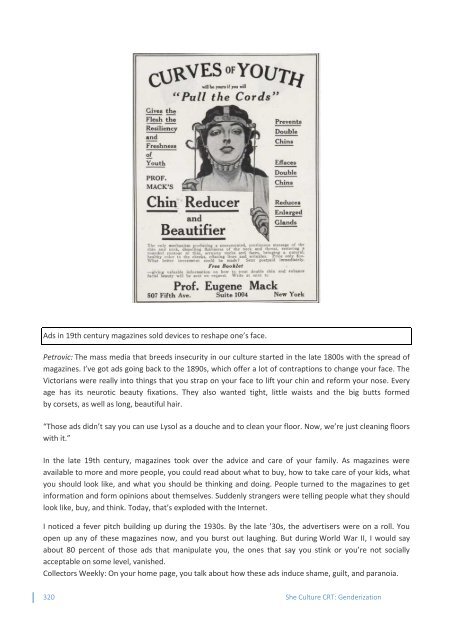7.Genderization
7.Genderization
7.Genderization
You also want an ePaper? Increase the reach of your titles
YUMPU automatically turns print PDFs into web optimized ePapers that Google loves.
Ads in 19th century magazines sold devices to reshape one’s face.Petrovic: The mass media that breeds insecurity in our culture started in the late 1800s with the spread ofmagazines. I’ve got ads going back to the 1890s, which offer a lot of contraptions to change your face. TheVictorians were really into things that you strap on your face to lift your chin and reform your nose. Everyage has its neurotic beauty fixations. They also wanted tight, little waists and the big butts formedby corsets, as well as long, beautiful hair.“Those ads didn’t say you can use Lysol as a douche and to clean your floor. Now, we’re just cleaning floorswith it.”In the late 19th century, magazines took over the advice and care of your family. As magazines wereavailable to more and more people, you could read about what to buy, how to take care of your kids, whatyou should look like, and what you should be thinking and doing. People turned to the magazines to getinformation and form opinions about themselves. Suddenly strangers were telling people what they shouldlook like, buy, and think. Today, that’s exploded with the Internet.I noticed a fever pitch building up during the 1930s. By the late ’30s, the advertisers were on a roll. Youopen up any of these magazines now, and you burst out laughing. But during World War II, I would sayabout 80 percent of those ads that manipulate you, the ones that say you stink or you’re not sociallyacceptable on some level, vanished.Collectors Weekly: On your home page, you talk about how these ads induce shame, guilt, and paranoia.320 She Culture CRT: Genderization



